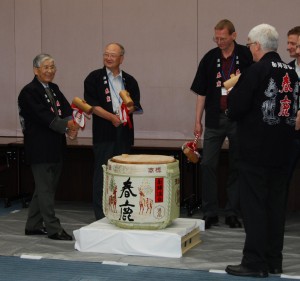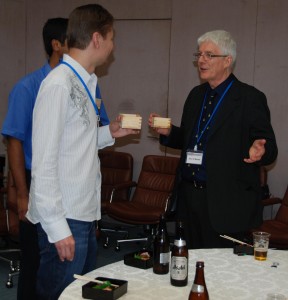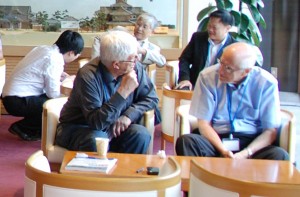Omicron crisis: Update: 19th December 2021
Two graphs below showing my computed trajectory for the omicron variant infection in the UK fitted to UK data. The latter are probably serious under-estimates as many are showing no symptoms and there is poor reporting ( The Health Security Agency and the the Office for National Statistics use sampling that suggests the official reported cases are a a serious under-estimate). It all looks a bit late for mitigation.
My assumptions are: (i) that the present exponential growth fits a doubling rate of 1.9 days; (ii) that doubling rate is incorporated in a standard logistic model that is fitted to the data assuming in the two graphs a peak at 34 and 40 days respectively from the onset on 27 November. The model takes no account of mitigation measures.
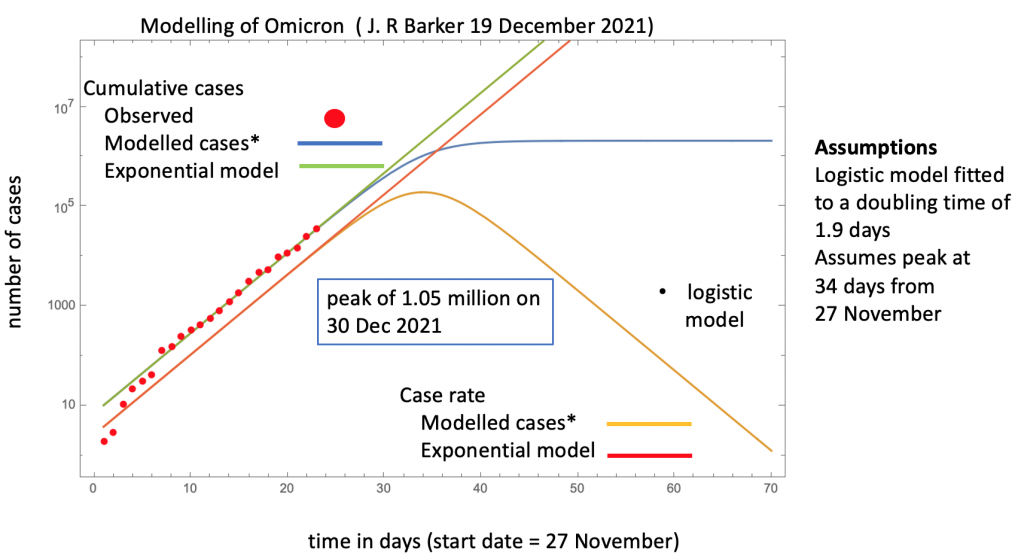
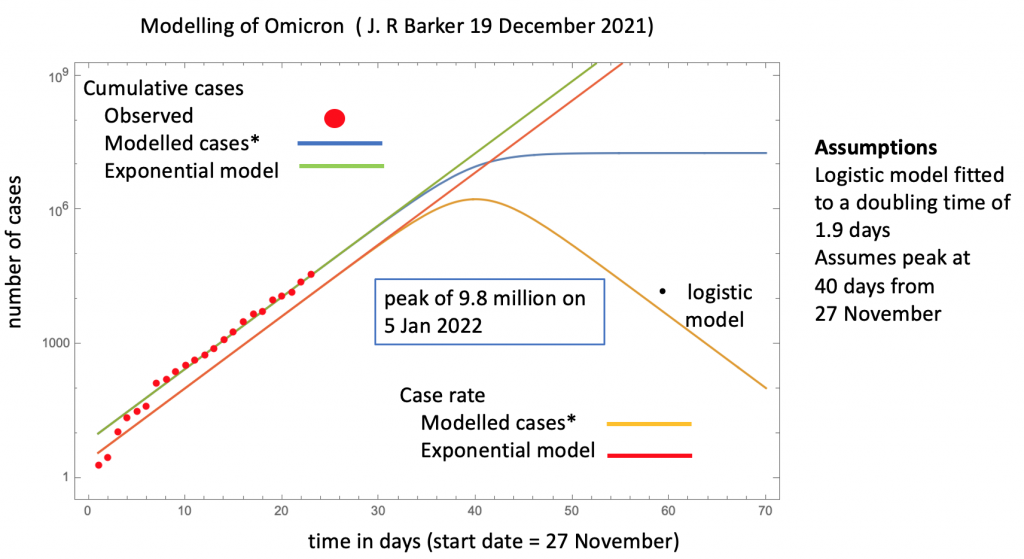
The curves are created from a logistic model for f(t) the cumulative number of infections at time t.

New variant of Covid-19 – omicron – a case for concern, 10th December, 2021
The rapid onset of the omicron variant looks to be following a fast exponential rise as shown the following graph using observed data from the UK Health Security Agency.
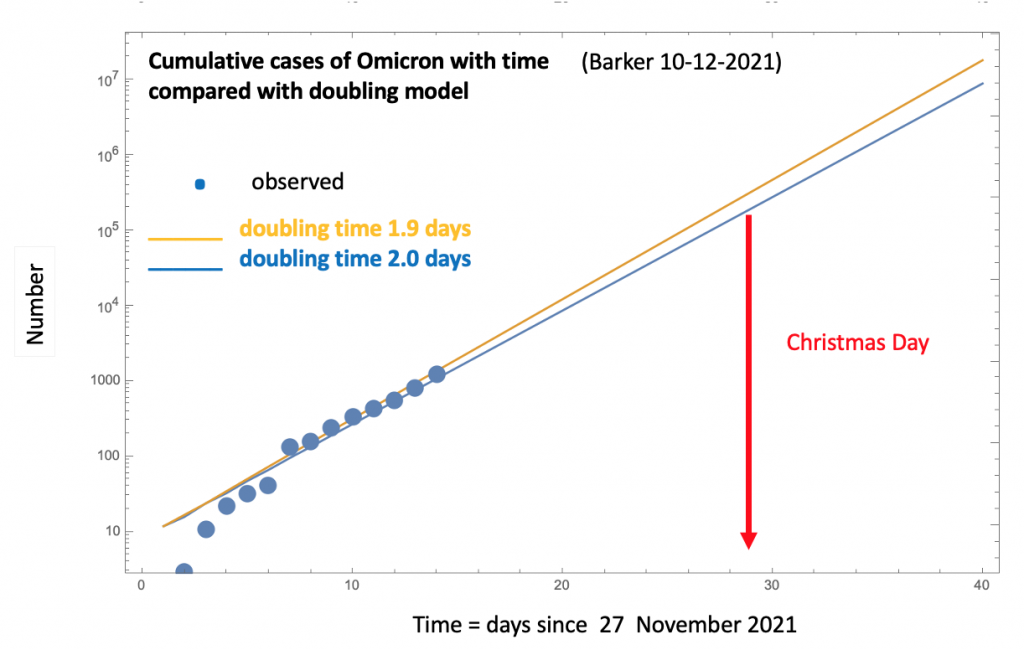
New publication 26th July, 2020 Schematics of a wrap round gate silicon nanowire field effect transistor of length 55 nm cut away to expose the channel region. The oxide thickness is 0.8 nm and the channel width is 2.2 nm. The channel length (gate length) is 15 nm, the source and drain extensions are 20 nm. The work function of the metal gate is 4.5 V. The projected image shows a typical non equillibrium Green function (NEGF) computed local density of states (LDOS) for the device assuming a drain bias of 0.6V and a gate bias at 0.6 V. The location of the first 1D sub band edge is shown along the central nanowire x axis as a function of energy and position (dashed white line); it mimics the self consistent potential along the same axis. In the projected image, the vertical energy scale is from -0.6 eV to 0.23 eV.
Schematics of a wrap round gate silicon nanowire field effect transistor of length 55 nm cut away to expose the channel region. The oxide thickness is 0.8 nm and the channel width is 2.2 nm. The channel length (gate length) is 15 nm, the source and drain extensions are 20 nm. The work function of the metal gate is 4.5 V. The projected image shows a typical non equillibrium Green function (NEGF) computed local density of states (LDOS) for the device assuming a drain bias of 0.6V and a gate bias at 0.6 V. The location of the first 1D sub band edge is shown along the central nanowire x axis as a function of energy and position (dashed white line); it mimics the self consistent potential along the same axis. In the projected image, the vertical energy scale is from -0.6 eV to 0.23 eV.
Quantum transport in a silicon nanowire FET transistor:
hot electrons and local power dissipation
ANTONIO MARTINEZ and JOHN R BARKER
Materials, 13 (15),3326-3367 (2020)
published on-line at: https://doi.org/10.3390/ma13153326
Open access: available on line
Covid-19 outbreak Modelling (March 2020)
The data from the World Health organisation provides some help in understanding the spread of the disease. There are simple ways to analyse these data in an empirical spirit:
Logistic function and complementary Fermi function for simple modelling of the COVID-19 pandemic: tutorial notes, John R Barker, download here: logistic function COVID19
But there are words of caution in taking this too far:
Why your COVD-19 exponential fits are wrong: words of caution and a lesson from catastrophe theory, John R Barker: download here Words of caution
Research Page describes COVID-19 notes and research
Public Lectures:
12th February, 2019
The Exploration of Space: John R Barker
University of Glasgow Retired Staff Association, Glasgow
14th March, 2018
The Exploration of Space: the Austerity Years: John R Barker
Royal Philosophical Society of Glasgow,
John Anderson Building, Strathclyde University, 7.30 p.m.
Recent Conference Papers
International Workshop on Computational Nanotechnology
5-9 June 2017, Low Wood Hotel, Windermere, UK
Image charge models for accurate construction of the electrostatic self-energy of 3D layered nanostructure devices
John R Barker and Antonio Martinez
Dissipative NEGF methodology to treat short range Coulomb
interaction: Current through a 1D Nanostructure
Antonio Martinez, John R Barker and Riccardo Di Pietro
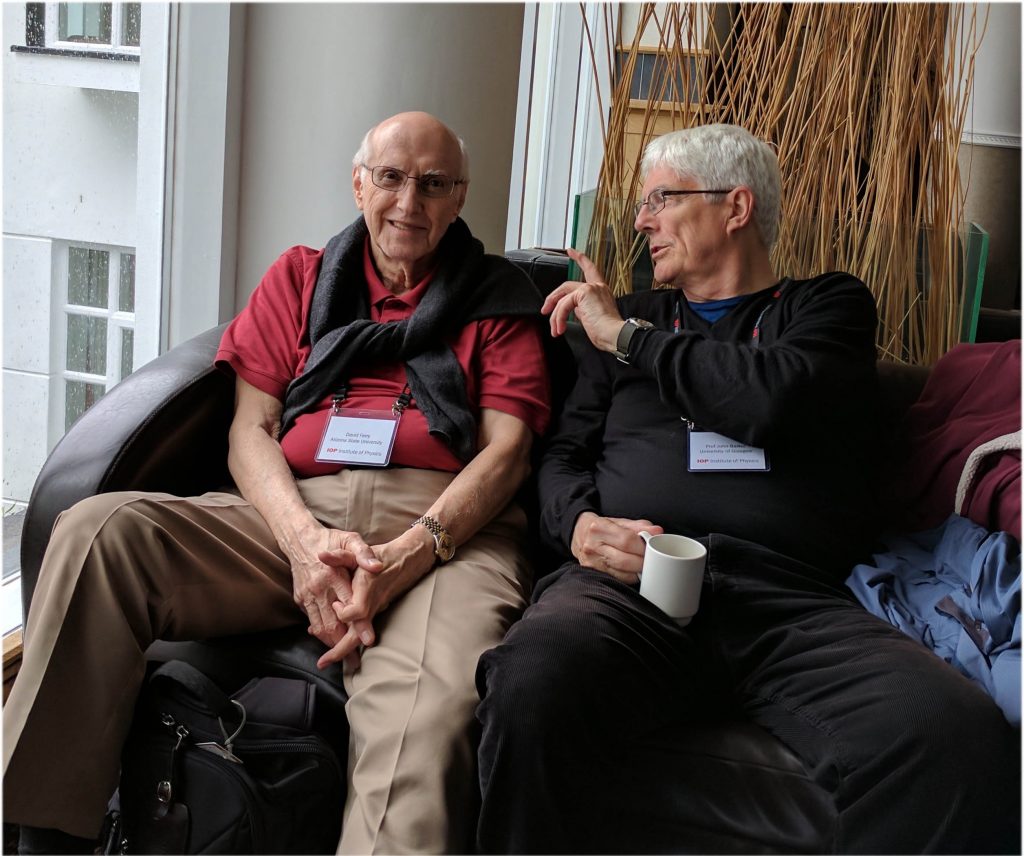
Dave Ferry & John Barker, Windermere, 2017
Euro-TMCS II: Theory, Modelling and Computational Methods for Semiconductors, Tyndall National Institute at University College, Cork, Republic of Ireland , 7-9 th December, 2016
Impact of short range Coulomb repulsion on the current through a 1D nanostructure
Antonio Martinez, John R Barker, Riccardo Di Pietro
UK Semiconductors Conference, University of Sheffield Hallam, July 2016
Current enhancement due to short-range Coulomb interaction in Quasi-open Systems
A. Martinez , J.R. Barker, R. Pietro
International Workshop on Computational Electronics,
West Lafayette, Indiana, 2-4 September, 2015
Impact of Discrete Dopants in Ultrascale FinFETs and the Effect of XC on Dopant Clustering
Antonio Martinez, Raul Valin and John R Barker
UK Semiconductors Conference, University of Sheffield Hallam, July 2015
Impact of local exchange-correlation in a FinFet device with dopant clustering
Antonio Martinez, Raul Valin and John R Barker
Euro-TMCS I: Theory, Modelling and Computational Methods for Semiconductors, University of Granada, Spain , 28-30 January, 2015
1. Effect of exchange-correlation in a FinFet device with dopant clustering
Antonio Martinez, Raul Valin and John R Barker
2. Impact of Fixed Oxide Charge on Ultra-scaled FinFets
Raul Valin, Antonio Martinez, Manuel Aldegnde and John R Barker
ESSDERC 2014
44th European Solid-State Device Research Conference
September 22-26, 2014 – Venice, Italy
Impact of Discrete Dopants on an Ultra-scaled
FinFET Using Quantum Transport Simulations
R. Valin, A. Martinez, and M. Aldegunde, J. R. Barker
Semiconductors UK 2014 July 9-10, Sheffield
Phonon scattering in ultra-scaled tri-gate FET
A. Martinez, R, Valin, M. Aldegunde, A. Price and J.R. Barker
International Workshop on Computational Electronics
Paris, France 3-6 th June 2014
1. Impact of Lateral Doping Profiles on Ultra-scaled Trigate FinFETs
R. Valin, M. Aldegunde, A. Martinez and J. R. Barker
2. TiN Work Function Variability on Ultra-scaled FinFETs using a NEGF formalism
R. Valin, A. García-Rivera, M. Aldegunde, A. Martinez, and J. R. Barker
3. Remote soft-optical phonon scattering in Si nanowire FETs
J. R. Barker and A. Martinez
Theory, Modelling and Computational Methods for Semiconductors IV
University of Salford, UK 23-24 January, 2014
1. Causal self-energies for NEGF modelling of quantum nanowires
John Barker, Antonio Martinez, Manuel Aldegunde and Raul Valin
2. Impact of different electron-phonon scattering models on the electron
transport in a quantum wire
Anna Price, Antonio Martinez, Raul Valin and John Barker
UK Semiconductors Conference, Sheffield, July, 2013
“Causal self-energies for quantum nanowires”
John R. Barker and Antonio Martinez
International Workshop on Computational Electronics,
Nara, Japan, June, 2013
Short Course (Invited)
“The Non-Equilibrium Green Function Approach to Quantum Transport in Nano-Structures” John R Barker
Download: Lecture Material
A few photos
A few photos
Contributed Papers
“Impact of Dielectric Induced Dynamical Many-Body Correlation Effects on the Transfer Characteristic of Si Nanowire Transistor”
A. Martinez, J.R. Barker, and M. Aldegunde
“Dependence of Matthiessen’s Rule on Complex Phonon Self-Energies: A NEGF Study”
M. Aldegunde, R. Valin, A. Martinez, and J.R. Barker
“Impact of Scaling on the Variability in Multigate Transistors”
M. Aldegunde, A. Martinez, and J.R. Barker
Materials Research Society Spring Meeting San Francisco April (2013)
“Self-energy Models for Scattering in Semiconductor Nanoscale Devices: Causality Considerations and the Spectral Sum Rule”
John R Barker, and Antonio Martinez.
______________________________________________________________
Newsflash: observation of Surreal Bohmian trajectories 2016
Newsflash: breakthrough on observation of photon trajectories
International Workshop on Progress in Non-Equilibrium Green Functions IV
😆
______________________________________________________________

